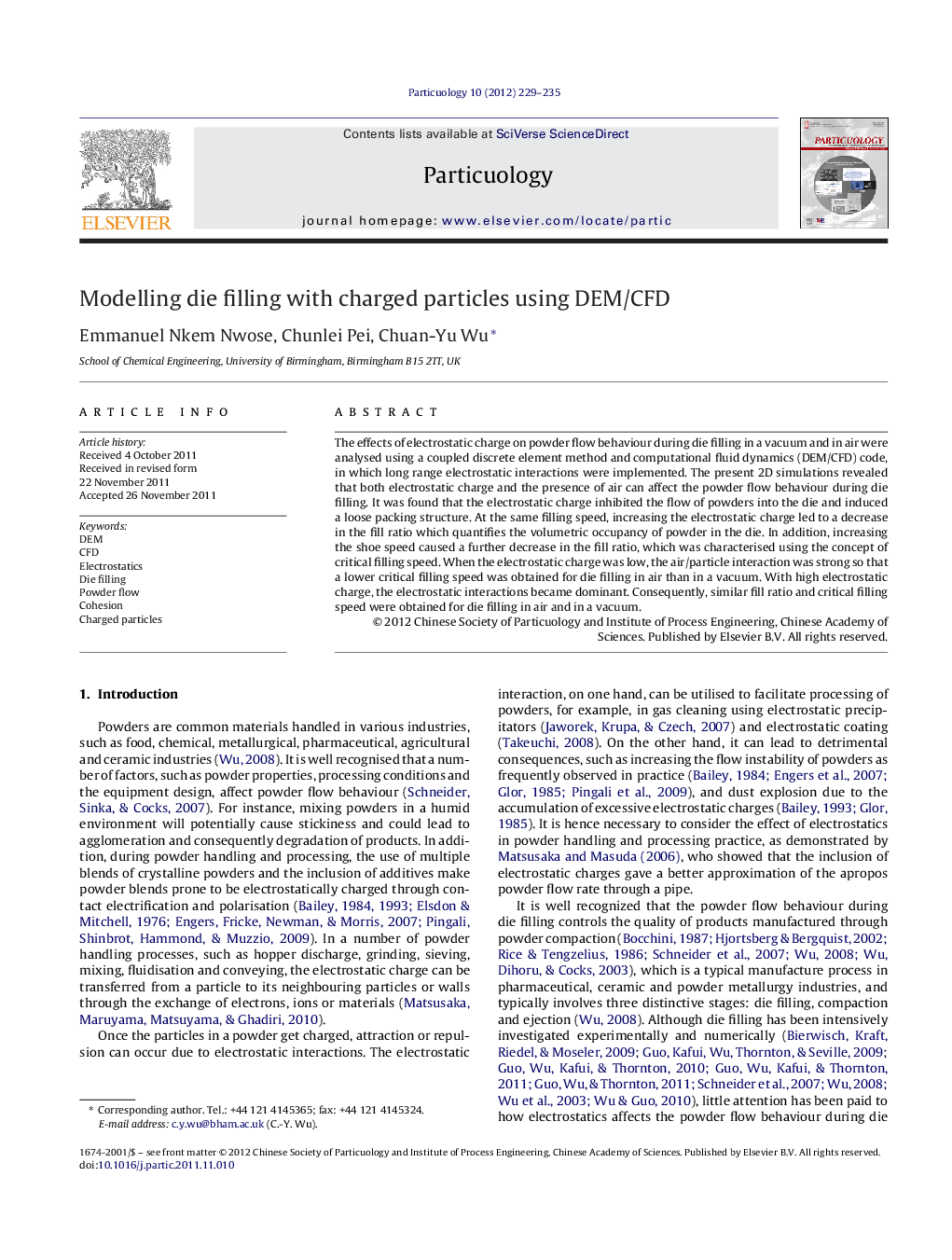| Article ID | Journal | Published Year | Pages | File Type |
|---|---|---|---|---|
| 672237 | Particuology | 2012 | 7 Pages |
The effects of electrostatic charge on powder flow behaviour during die filling in a vacuum and in air were analysed using a coupled discrete element method and computational fluid dynamics (DEM/CFD) code, in which long range electrostatic interactions were implemented. The present 2D simulations revealed that both electrostatic charge and the presence of air can affect the powder flow behaviour during die filling. It was found that the electrostatic charge inhibited the flow of powders into the die and induced a loose packing structure. At the same filling speed, increasing the electrostatic charge led to a decrease in the fill ratio which quantifies the volumetric occupancy of powder in the die. In addition, increasing the shoe speed caused a further decrease in the fill ratio, which was characterised using the concept of critical filling speed. When the electrostatic charge was low, the air/particle interaction was strong so that a lower critical filling speed was obtained for die filling in air than in a vacuum. With high electrostatic charge, the electrostatic interactions became dominant. Consequently, similar fill ratio and critical filling speed were obtained for die filling in air and in a vacuum.
Graphical abstractFormation of clusters during die filling with oppositely charged particles.Figure optionsDownload full-size imageDownload as PowerPoint slideHighlights► Simulations of die filling with oppositely charged particles reveal that both fill ratio and critical filling speed generally decrease as electrostatic charge increases. ► When electrostatic charge is low, strong air/particle interaction results in lower fill ratio and lower critical filling speed as compared to those in a vacuum. ► When electrostatic charge is high, electrostatic interaction becomes dominant so that similar fill ratios and critical filling speeds are obtained both in air and in a vacuum.
